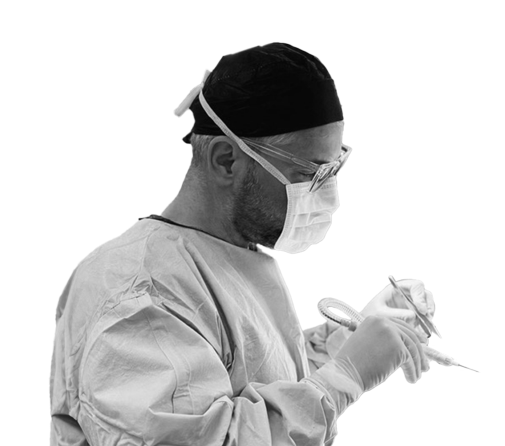Sydney Plastic Surgeon Breast Reduction Mammoplasty Surgery
Australia’s registered plastic surgeon with experience in:
- Breast Augmentation Mammoplasty & Recovery
- Complicated Breast Revision Surgery & Internal Bra System
- Tuberous Breasts & Breast Asymmetry Corrections
- Comprehensive understanding in Fat Grafting Technique
WHAT IS A BREAST REDUCTION (MAMMOPLASTY)?
Breast reduction, also known as reduction mammoplasty, is an operation intended to reduce the size of a woman’s breasts and reposition their shape. Frequently, the areola (dark skin around the nipple) is also made smaller.
The operate can often alleviate functional symptoms (medical disorders) such as neck and back pain caused by excessive breast weight.
FREQUENTLY ASKED QUESTIONS:
This is probably the most important topic that gets discussed in relation to breast reduction mammoplasty in Dr Tavakoli’s practice. Plastic surgery does leave scars and it is important that you see plenty of postoperative photos to understand the spectrum of scarring that can occur with breast surgery.
There are a variety of techniques for the breast reduction (reduction mammoplasty) procedure. The techniques reflect a combination of differing skin incisions (scar pattern) and the methods used in shaping the breast substance.
- Liposculpture – This technique is not commonly used. However, in patients who have large breasts that are mainly fatty in nature and do not exhibit ptosis, the liposuction surgery procedure may be quite successful with only small scars.
- The European technique involves an incision around the areola (BENNELLI’S-GOES). This method is usually reserved for breast lifting (mastopexy) and a very small breast reduction mammoplasty.
- The French-Canadian technique involves the extra incision between the areola and breast crease as well as the one around the nipple (lollypop scar, LE JOUR and HALL-FINDLAY). This is Dr Tavakoli’s most favoured method of reducing small-moderate size breasts in generally younger patients (20-50 range).
- The final technique involves the above incisions, plus the extra long incision within the crease under the breast (WISE pattern- most traditional). This is an “anchor-shape” or inverted “T” incision. Dr Tavakoli still utilises this method in very large breast reduction mammoplasty cases especially in the older age group (50-70).
Occasionally, especially with mastopexy only, these incisions may be modified and more limited. Some operations may require only the incision around the areola.
Large breasts (macromastia) or breast hypertrophy can occur in a variety of conditions (family genetics, post pregnancy, excessive adolescent growth). When the excessive size causes functional problems, insurance may pay for part of the operations. These problems may include neck pain, back or shoulder pain, hygiene difficulty, and breast pain. Mastopexy (uplift) is almost never covered by Medicare or health funds.
Generally, the nipple-areolar complex (brown part of the breast) is carried on some breast tissue to keep it alive. This usually preserves the nipple sensation and keeps it viable. However, for technical reasons, in extraordinarily large or bulky breasts, we sometimes remove the nipples completely and put them back as “free grafts.” The sensory nerves are all cut, and even though a certain amount of sensation returns after healing, it will never be normal, with erotic sensation completely lost. The milk ducts are interrupted in this operation, so nursing would be impossible. You will be informed in advance if your breasts are in this category.
Breast reduction mammoplasty can be done as an outpatient procedure requiring no hospitalisation. Usually suction drains (plastic tubes) are left in place after surgery.
A general anaesthetic is used on all reduction mammoplasties and some mastopexies.
Dr Tavakoli will always perform the operation.
Discomfort, swelling, and discolouration of the breasts are to be expected for several weeks. Usually, our patients return to almost normal activity within two weeks. The scars at the incision lines typically become reddish, raised, and firm a few weeks after surgery, but after many months become pale and soft. After 8-12 months, the scars are relatively inconspicuous. The nipples and some areas of the skin may be numb or sensitive after surgery. Sensation frequently returns within a few weeks or months but may be diminished or overly sensitive.
Gravity continues to have its effect, and there is a tendency for the skin of the breast to stretch over a long period of time. Women vary a great deal in this respect. In general, the smaller the breasts, the less tendency for ptosis to recur. If the breasts sag further, excision of the skin on an outpatient basis can be used to correct the problem. If we try to lift heavy breasts without making them smaller at the same time, ptosis will return soon. One key to a satisfying result is realistic expectations – a wide-based large breast will not look like a smaller, but firm, narrow-based breast.
You should plan to avoid activities which require much raising of the arms above the level of the head for 10 days after surgery. With great care, you can drive about 7 days after surgery. Patients can usually return to work in a few days unless their occupation requires particularly strenuous movements and lifting. In such cases, 2-3 weeks should be allowed.
- Walking can commence within days
- Light jogging from 6 – 8 weeks
- Gym & Pilates from 6 – 8 weeks
Surgical risks may include: infection, bleeding, asymmetry, scarring, and nerve damage. Damage to the blood supply of the nipple-areolar complex, although uncommon, can occur.
Any surgical or invasive procedure carries risks. Read more here about general risks of plastic surgery.
Any surgical or invasive procedure carries risks. Before proceeding, you should seek a second opinion from an appropriately qualified health practitioner. Any surgical or invasive procedure carries risks. Read more here about general risks of plastic surgery.


